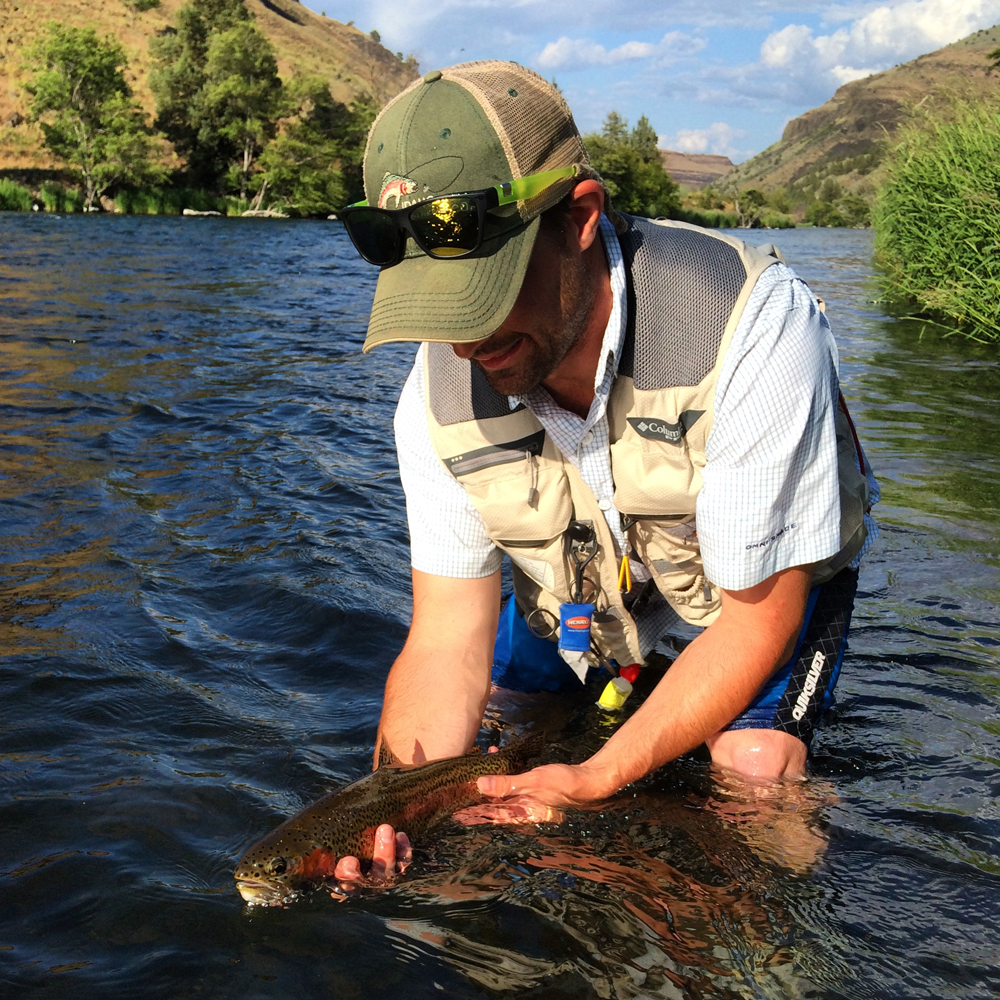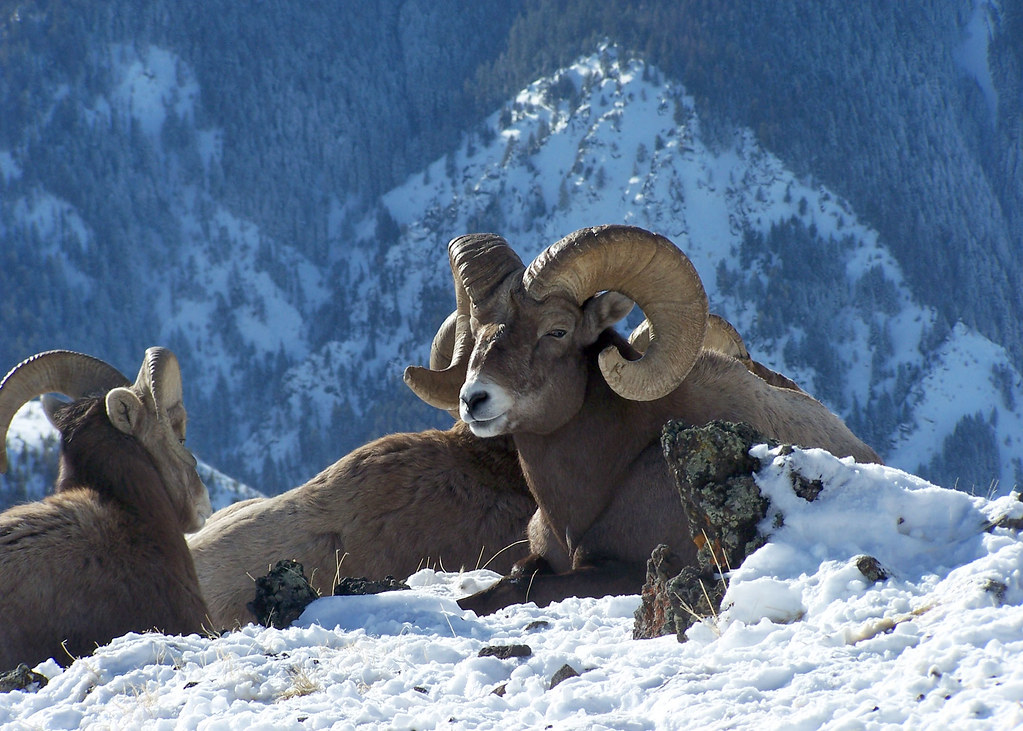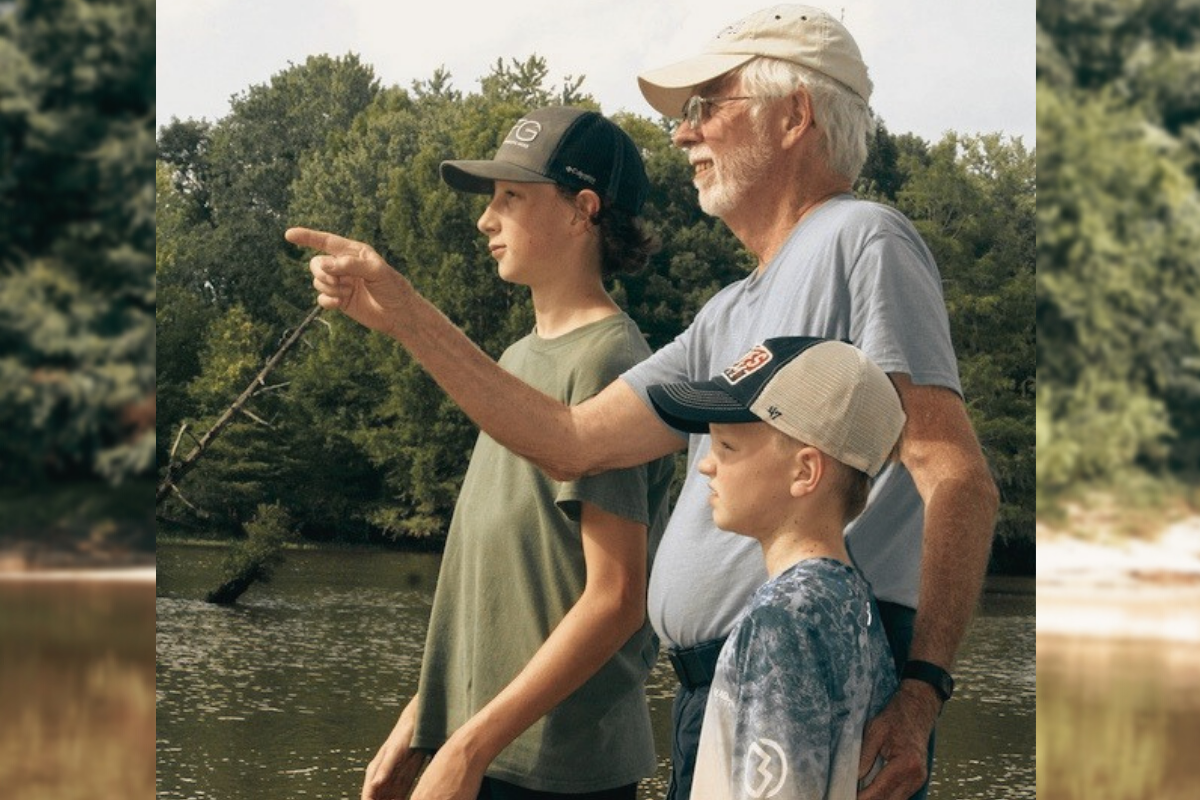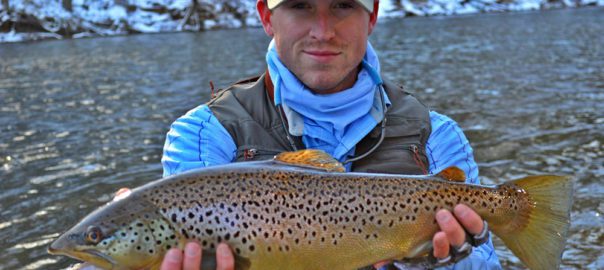Few fish grant such a feeling of accomplishment.
It’s that time of the year again: the epic spring flight of the salmonfly and slightly smaller golden stonefly on Oregon’s Deschutes River. The hatches, both highly publicized by outdoor media, can bring water to a boil via all of the feeding trout. The resulting “hatch” of fishermen is just as impressive.
The river and its inhabitance are descended upon from the air, land, and sea. A great flotilla of various river craft carry fishers down its current, while land forces relentlessly patrol the beach. From the skies come the various sinking-nymph patterns carried along by large, rafting bug patterns. In addition, the mighty osprey wields dive-bombing talons. Woe to the aquatic inhabitance of the Deschutes each spring!
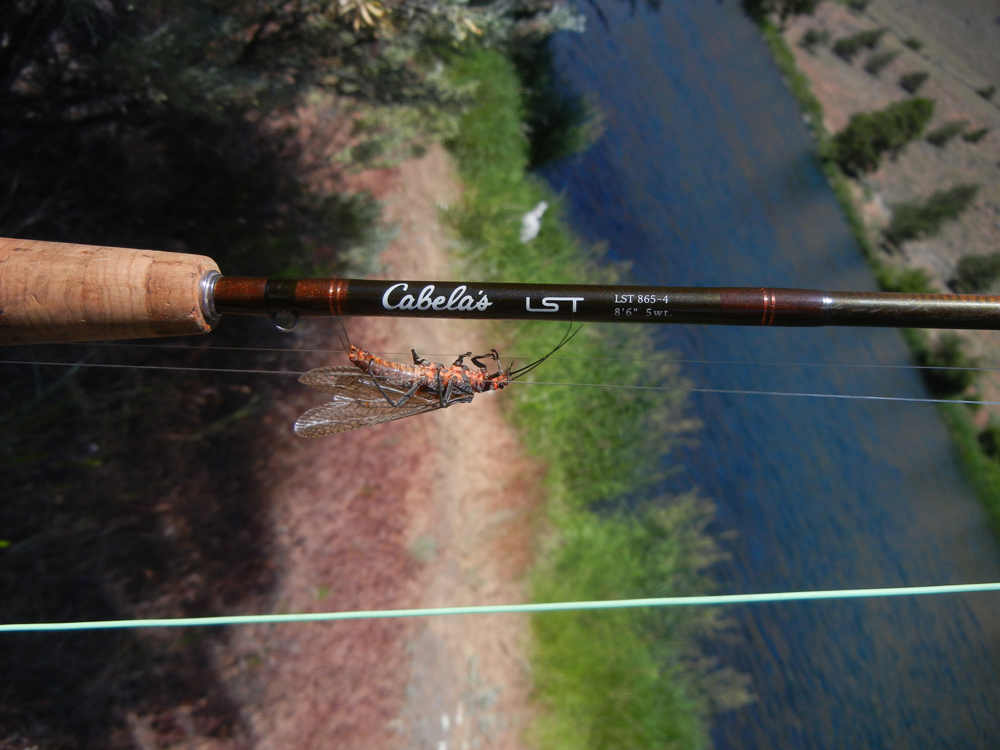
Imitation is more than just the sincerest form of flattery; it’s also the best way of catching a sizable trout.
Makary, my eldest son, has frequently fished this stretch of river and has knowledge of its tendencies and terrain. He suggested we use mountain bikes along the river trail to extend our reach. There were certainly fewer drawbacks than walking, although we did have to be on guard against amazing wrecks, disgruntled hikers that begrudgingly stepped out of the way, and the occasional sunning rattlesnake — I only ran over one!
Our first evening was an opportunity for me to warm up my rusty fishing techniques and try to learn as much as I could about the river. Just as evening fell, with my pipe lit, I relegated myself to the role of spectator and saw Mak catch the first fish of the trip. He was using a nymphing technique in an effort to catch one of the river’s large bull trout. Instead, he landed another deep-water fish species — a whitefish. It was a terrific battle that was won only after several strong runs in favor of the fish. Some fishermen have never experienced its sporting prowess, while others simply do not appreciate it.
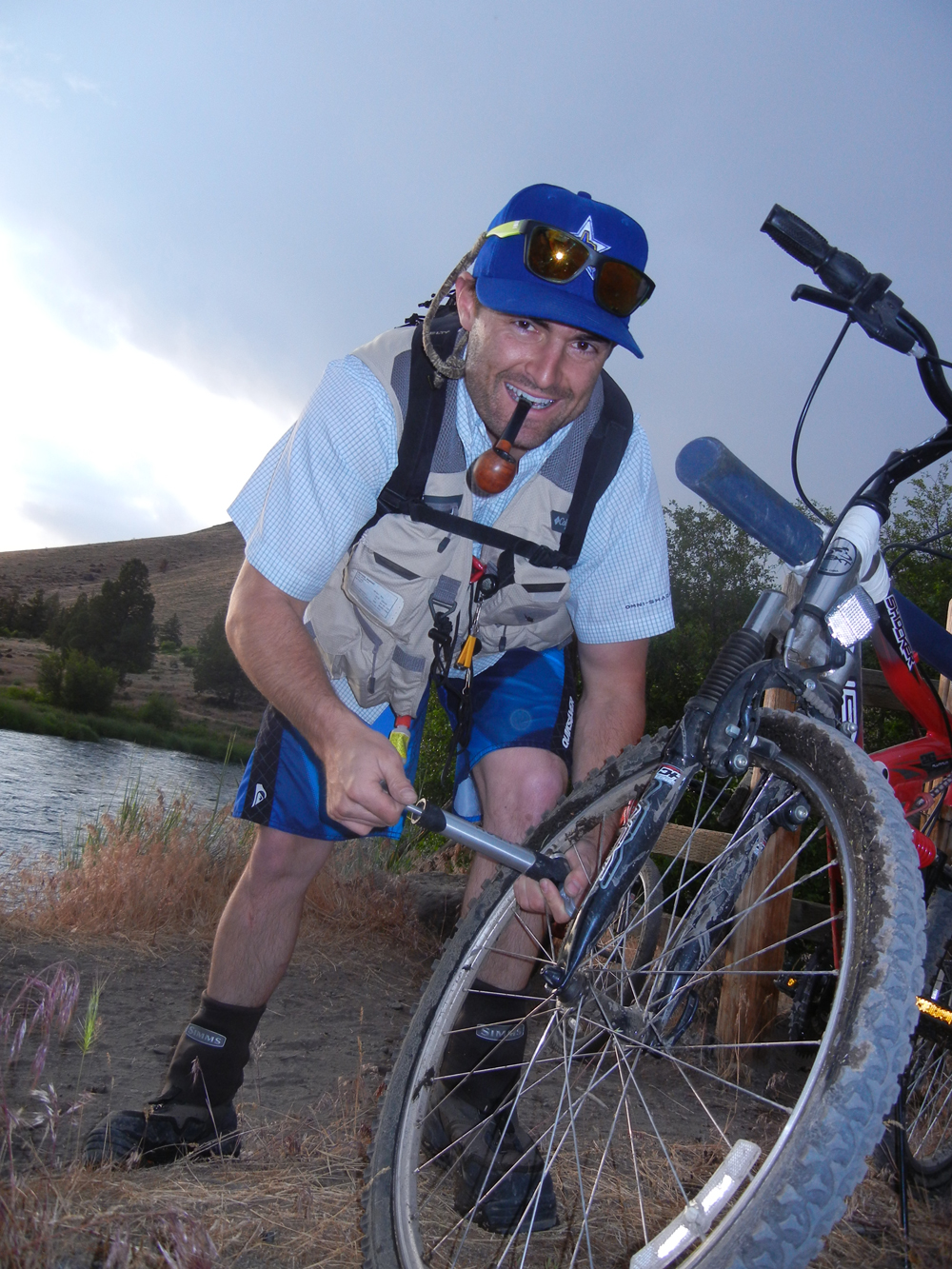
Hitting the trail in an effort to escape the competition.
The following morning was a late start, as we believed the fishing wouldn’t get really good until warmer temps brought out the insects. We desperately tried to distance ourselves from our land-locked fishing competition, traveling 12 trail miles by bike that day. Watercraft brought loads of fishermen, many camped along the river’s edge. Even where there wasn’t a camp, there were fishermen — loads of fishermen!
I had worked hard and had yet to hook a fish at dusk, racing a thunderstorm to see which would arrive first. Adding to our collective enjoyment, and my discouragement, Mak began catching trout after trout.
Then a sizable head surfaced, mouth agape, and my big-bug fly disappeared from its drift along a seam. Zzzip! My line cut the water as I raised the rod to set the hook. Instead of racing away with head-shaking leaps, the trout ran deep toward the slower eddy. I stripped in line frantically until, realizing its mistake, the fish made three hard runs toward swifter current. Adding a dramatic touch, thunder echoed through the canyon as the tired redband slipped into my net.
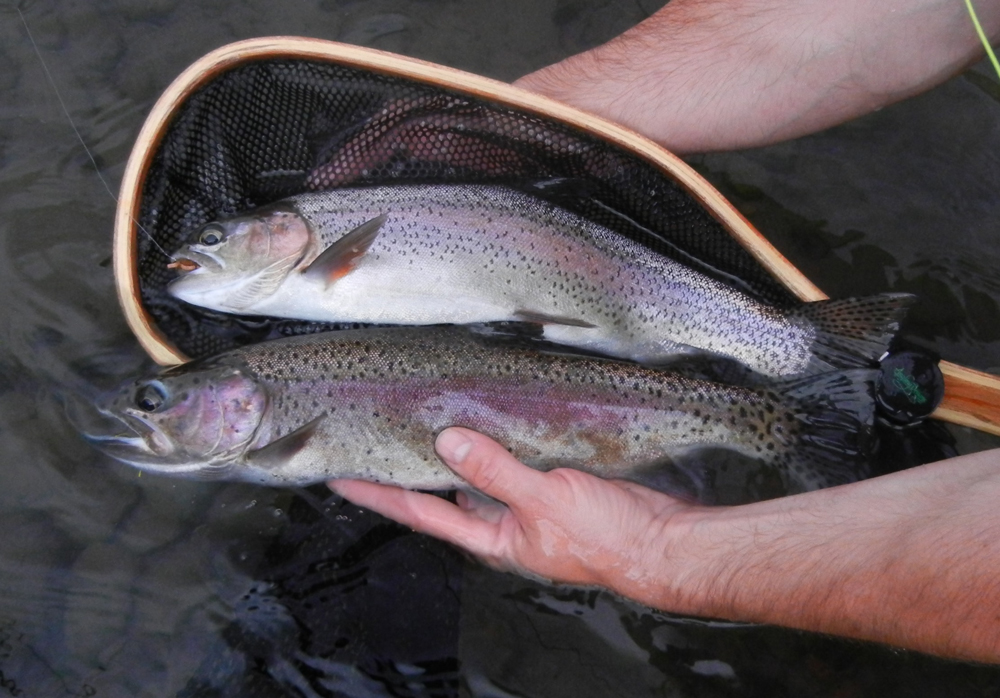
Well worth a few rattlesnakes!
Gusts of wind began to kick up, making casting a challenge. I missed a fish or two and witnessed a couple leaping heroically for blowing bugs. With a large, brown body hackled with yellow and orange, the floater I tied especially for this trip pulled a bead-head prince dropper in tow. Suddenly, the top fly dived beneath darkened waters, and I set the hook on a lively rainbow that this time struck the nymph. She made four spectacular leaps and as many good runs before I could bring her to shore.
After taking a few hurried pictures, I released the trout. It was an awesome feeling, battling flat tires, snakes and combating fishing conditions and the elements to land trout on the Deschutes. Few fish grant such a feeling of accomplishment.

Dozens of practical tips, invaluable advice, and hard-won observations on how to fool even the wiliest fish, in both fresh and salt water.
Whether your fly fishing takes you to freshwater trout streams and bass lakes; to the Northeast salt for striped bass and bluefish; or to the tropics for bone-fish, tarpon, jacks, and redfish, you will find much of value in Lefty’s Little Fly-Fishing Tips, a distillation of a fly-fishing master’s more than five decades plying the waters of the world with fly rod in hand. Advanced and beginning fly anglers alike will benefit from the wisdom born of Lefty’s long experience. Learn how to: Use a partner to find fish and cast quickly and accurately; improve your chances of catching larger fish of any species; simultaneously retrieve a fly and strip line from the reel; rescue a fly that’s stuck on a log; cast easily in tight quarters; organize and maintain your tackle for optimum convenience and performance and much more. This beautiful and practical book is a must for any serious fly fisher, beginner or expert.
Lefty Kreh is the best known and most respected fly-fishing author and fly-casting instructor in the world. He is the author of more than twenty books and countless magazine articles. Buy Now

